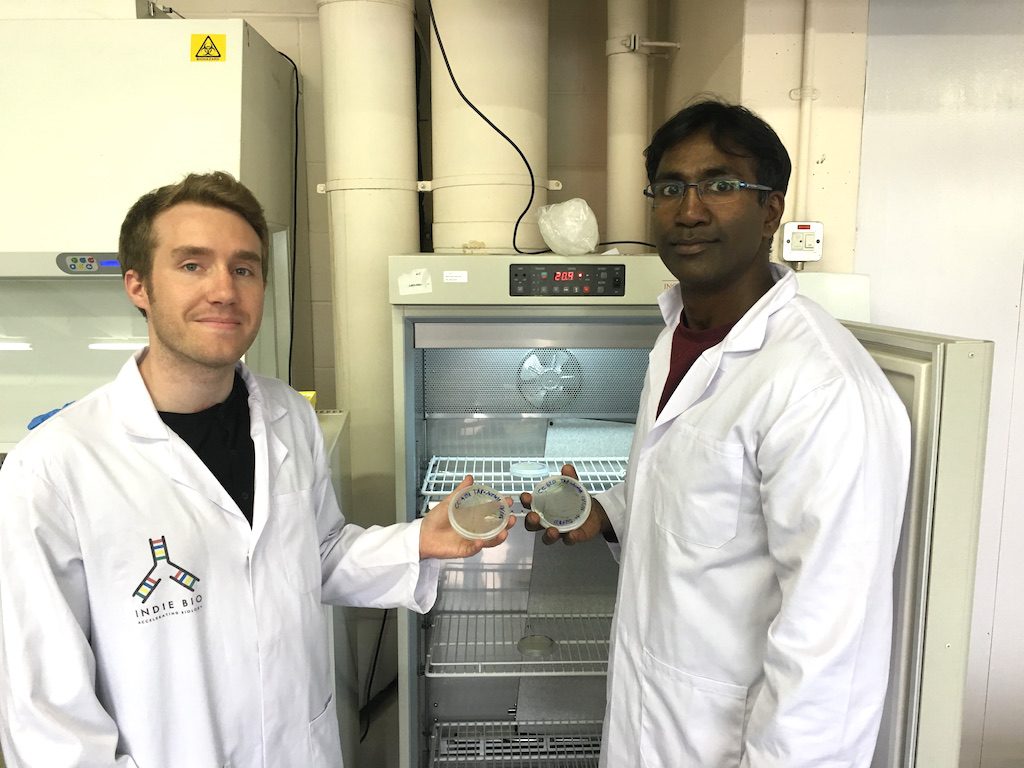
Features
Research
Oral vaccine delivered in microalgae
November 3, 2016 By Tom Walker
 One of the benefits the company sees in the oral vaccine is that it can be used in any stage of the lifecycle.
One of the benefits the company sees in the oral vaccine is that it can be used in any stage of the lifecycle.An Irish biotech company is developing a new oral vaccine process that the principals hope will change disease management systems in the aquaculture industry and save a lot of money.
“The core of our technology is that we are locking a vaccine inside the biomass of microalgae and using that to feed the fish,” says Antonio Lamb who is a Co-Founder of MicroSynbiotiX, “The natural digestion process of the fish then unlocks the vaccine.”
“When we were doing market validations for our technology we saw the significant disease
losses in aquaculture,” explains Lamb. Indeed, the company estimates loses of $1.5 to $3 billion US to white spot syndrome in the shrimp growing industry and overall 5% of all aquaculture stock for $10 billion a year. “We realized this is a huge problem we could potentially address and help the industry become more sustainable.”
Currently, the disease management choices for industry are limited to antibiotics, often administered prophylactically, manual vaccination, which is costly and invasive, or immersion and spray vaccinations, which can be less effective.
MicroSynbiotiX estimates that in Europe alone, 386 million fish are vaccinated each year at a cost of 35 cents a fish or $135 million.
The solution could lie in better oral vaccines. “There hasn’t really been anyone with an effective oral vaccine in the market,” claims Lamb.
Engineered micro algae is used to culture the protein that grows the vaccine. The algae is then added to fish feed. “The premise is that it should work for all feed formulas across the aquaculture growth process,” says Lamb.
And that’s its strength. “One of the values of MicroSynbiotiX oral vaccine is that they can be used in any stage of the lifecycle,” Lamb explains. “We can vaccinate fry, fingerlings and adult fish, every stage of the growth process.”
The company is currently developing a variety of vaccine strains carried within the algae and is looking to scale-up to commercial production. “While the concept of microalgal oral vaccination has been tested and shown to work, the efficacy, production yield, and dosage required are still largely unknown, and these are the questions that we will have answers for once we complete our fish challenge trials,” says Lamb.
“We engaged in a co-development strategy with ICTYO Pharma, which has offered to provide the challenge trials for us,” explains Lamb. “Once we have enough biomass, they will help us with the efficacy studies to demonstrate that the vaccine is working.”
“This is an area where we can save people a lot of money,” Lamb points out. “As you increase the output of aquaculture you increase the stocking densities and have greater chances of disease outbreak. Consequently the industry must increase their use of antibiotics, which is unsustainable in the long run. I think this technology will also help aquaculture be more environmentally friendly and have a better reputation.”
– Tom Walker
Print this page





